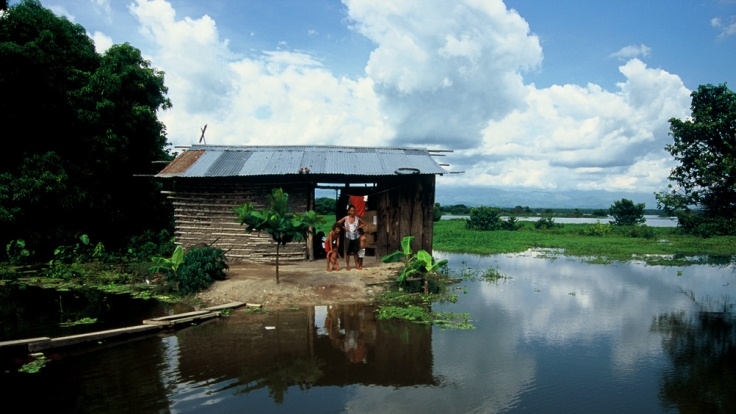Challenge
Colombia is prone to a number of natural disasters that represent a serious challenge for its sustainable development. Annually Colombia suffers more than 600 natural disasters, having the highest rate of recurrent natural disasters in Latin America.
Additionally, in the past three decades Colombia has suffered from six major earthquakes, four volcanic eruptions, major landslides, and extensive flooding. This exposure is further aggravated by continued population growth and a subsequent ever increasing concentration of settlements.
Furthermore, recent trends in global climate change linked to increased climatic variability will likely exacerbate the country's exposure to floods, erosion, landslides, and drought. Over the years, natural disasters in Colombia have absorbed a growing share of the national budget and pose a serious threat to fiscal sustainability. The State has seen its responsibilities increase with each disaster setting precedents for reconstruction and recovery for the next event. Recognizing the importance of dealing with disasters before they happen, Colombia has for the past two decades institutionalized a system for comprehensive disaster risk management.
Solutions
In 2005, the Bank approved an Adaptable Program Loan (APL) series to support the implementation of the Government’s disaster risk management policies. The first phase APL was approved aimed to strengthen the capability of the national disaster risk management system to support comprehensive disaster risk reduction. The first APL included, among its lending components, the development of a risk financing strategy and a contingent loan facility to guarantee the immediate availability of resources in case of national disaster.
In 2008 the Bank introduced a new contingent credit line, the Development Policy Loan with a Catastrophe Deferred Drawdown Option (CAT DDO) that served to provide immediate liquidity to countries in the aftermath of a natural disaster. Colombia chose to replace the line of credit embedded in the APL with the DPL with a Cat DDO that serves the same purpose more efficiently. Aligning with the Government’s development of the disaster risk management agenda, the above mentioned DPL had as prior action the inclusion of a disaster risk reduction and management strategy in the 2006-2010 National Development Plan.
Results
Through this project, Colombia’s program for reducing risks resulting from adverse natural events has been strengthened, through the following improvements:
- Expanded coverage of the hazard-monitoring network. In July 2008, Colombia had 18 functioning seismic stations, 95 functioning volcanic monitoring stations and 249 functioning automatic hydro-meteorological stations. As of December 2011, the country had 35 functioning seismic stations, 303 functioning volcanic monitoring stations and 270 functioning automatic hydro-meteorological stations.
- Addressed the needs of at least 80% of people in disaster affected areas that requested support. At appraisal 80% of affected households that requested support were attended with resources from the National Fund of Calamities. According to National Unit for Disaster Risk Management (UNGRD), from 2008 to 2011 the needs of more than 97% of affected households requesting support were addressed, which indicates that the indicator was largely met and exceeded.
- Expanded the number of municipalities that have disaster risk management plans. From 2008 to 2009, 123 municipalities were assisted in the development of disaster risk management plans; and between 2010 and 2011 an additional 317 municipalities were assisted. Of the total number of municipalities assisted, 388 municipalities had disaster risk management plans by the end of 2011.
- Reduced the number of people living in the high hazard zone of the Galeras Volcano. Of 5,757 people living in the high hazard zone at the time of appraisal, in December 2011 approximately 7.7% or 441 people had been resettled. The latter indicates that while the Bank’s indicator has been met, the benchmark established by the Government in 2011, of 500 resettled people, was not met.
- Defined framework for Contingent Financing. In August 2011 the Ministry of Finance and Public Credit published “Contingent Liabilities: The Colombian Experience” which, among others, discusses contingent liabilities arising from natural disasters. The document recommends the use of a set of instruments to achieve maximum risk coverage at minimum cost and is considered to adequately define a framework for contingent financing.

